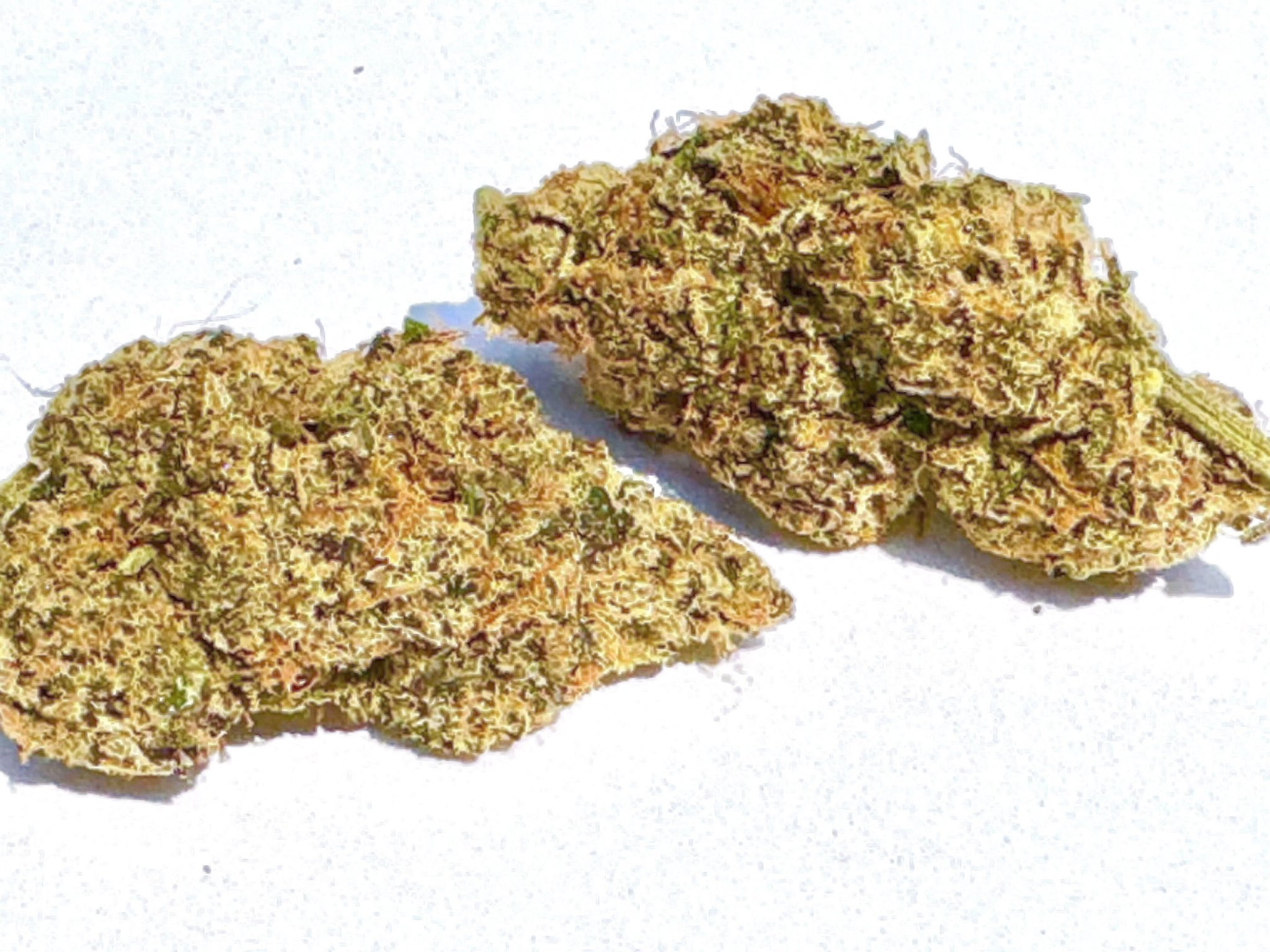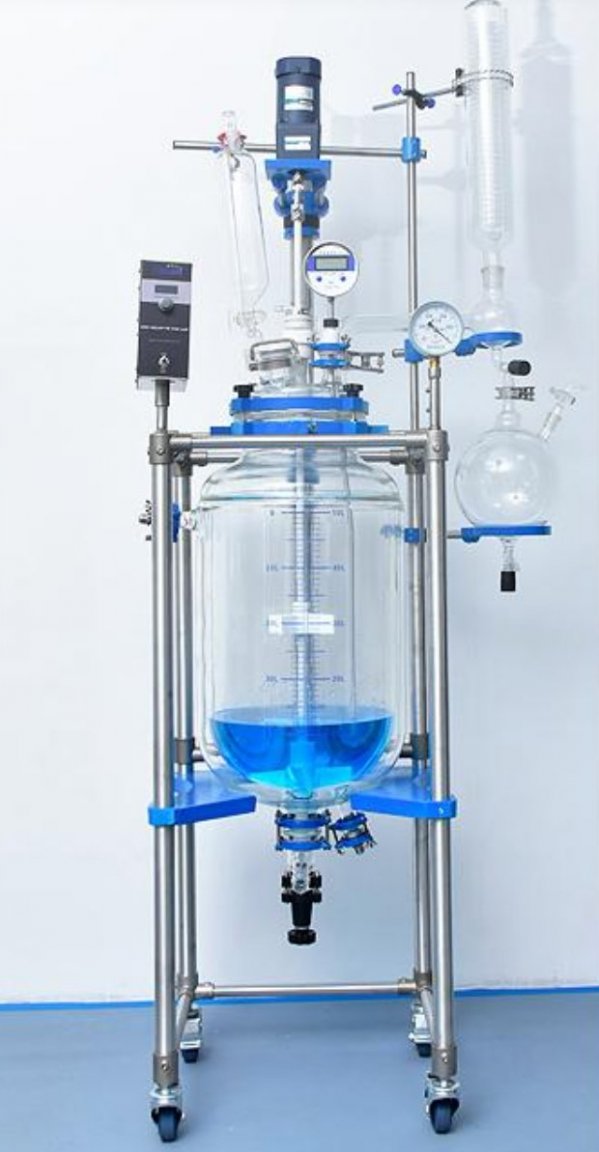
SamuiGrower
Member-
Posts
128 -
Joined
-
Last visited
Content Type
Events
Forums
Downloads
Quizzes
Gallery
Blogs
Everything posted by SamuiGrower
-
NO, not BS. Cannabis does indeed affect sleep architecture: namely REM sleep (Rapid Eye Movement). In fact, all the cannabinoids do, in one way or another with the exception of CBD. The problem with cannabis (namely THC, and all the forms in which we consume it) is the difference between short and long term use (for sleep). Tolerance (as in every day chronic use) shifts the effectiveness of the “pros” and it’s therapeutic affects to the “cons” of REM suppression, sleep fragmentation (multiple awakenings) and prolonged sleep onset. There are short and long term effects. THC is quite effective in inducing faster sleep onset, and because of this, is used in PTSD and insomnia treatment. THC reduces nightmares by reducing REM sleep. Initially, THC increases slow wave, deep sleep cycles. However, chronic everyday use shifts the balance away from REM sleep and does the opposite. THC, for short term use is quite effective in managing fast onset sleep, PTSD, nightmares and anxiety, but chronic use defined by developing a tolerance, and most smokers on this forum understand this, does the opposite. In fact, cold turkey cessation can result in vivid dreams, nightmares and insomnia. This is not speculative. THC binds to CB1 receptors and alters neurotransmitters that regulate sleep rhythm and directly affects REM sleep. There are multiple research papers written on the subject you can research. Google and YouTube are NOT the recommended path for research though. lol.
-
A poster in this forum once wrote, “…..the difference between getting high on 15% THC flower and 30% THC flower is one hit! “ I found this so humorous AND so true. Lol. I have smoked “vintage” hash that was several years old and yes, it still got the job done. The takeaway catchphrase for those that enjoy flower: “Fresh is BEST”
-
Cannabis begins to degrade immediately from post harvest. You can slow it down by controlling the environment in which it is dried, cured and stored, but can not keep it at bay for an extended time. Degradation of flower directly affects quality and value. Cannabinoids (THC, CBD, etc al.), terpenes and flavonoids degrade by light (photo-oxidation - primarily UV light), enzymes, and oxygen/air. Monoterpenes are the most volatile and begin to evaporate (volatilize) almost immediately. Chlorophyll degrades through enzymatic and microbial degradation. This is a good thing, reducing harshness and affecting the flavor in a positive way. Decarboxylation, the conversion of THCa to THC (also a good thing) occurs slowly. The conversion of THC to CBN also occurs and is an indication of “old” flower - not a good thing! A research paper I saw a couple of years back showed a linear decrease of THC and other cannabinoids over time, regardless of storage techniques used. Temperature, humidity and light are the major factors attributing to quality and purity loss. On a commercial level, cannabis is viewed as a perishable crop and should be sold and consumed before any quality characteristics are compromised. For personal/hobby grows and consumption, cool, dry environments will slow down the process. Vacuum sealing and refrigeration will slow terpene loss but will not abate CBN conversion. Freezing will do the same but if the flower has more than 5-10% moisture it will not ‘look’ very good, but if it is for personal consumption, no big deal, right? A humidity pack (63%) with your flower in a sealed mason jar, kept out of direct light, in a cool place is the correct handling for those of you who enjoy connoisseurship. One of my pet peeves, here in Thailand, is the handling and display of flower in dispensaries/weed shops. That pale, bleached look, that makes all flower look the same is a result of photo UV oxidation. High temperatures and humidity fluctuation certainly doesn’t help. Does your local weed shop turn off the air cons at the end of the day? Where do they store their flower when they are not open? Oversupply and poor merchandising of perishable flower is the issue. It always reminds me of an overcooked green vegetable - pale and drab. i hope this was helpful.
-
Photos of your Grow in Thailand
SamuiGrower replied to Mr Meeseeks's topic in Thailand Cannabis Forum
Male -
Re: What can be done with cannabis trim?
SamuiGrower replied to Marcus Martin's topic in Thailand Cannabis Forum
Rest assured there is an outlet/market for cannabis trim in the grossly unregulated Thai cannabis industry. Stating illegalities to processing, edibles, oils, tinctures and topicals, is to ignore the fact that anything but flower exists in the marketplace. The first, and obvious, downstream use is in “washing”, to produce water hash: a relatively low tech, low labor, mechanical process. This can be done with fresh or dried trim. I see it marketed throughout Thailand as hash, bubble hash or as unpressed kief. If a commercial grower is not utilizing or selling off their trim, they may just be in the ‘flower’ market or not vertically integrated to make/sell other products or interested in selling their trim to processors. The ‘other’ use of trim would be for extraction, to produce: M.I.E’s/C.I.E’s (marijuana/cannabis infused edibles), oils, tinctures and topicals. Because cannabinoids are oil soluble, a solvent (alcohol, hydrocarbon) is typically used for extraction. The solvent is then evaporated to create a concentrate that is then incorporated into the final above mentioned product. This is an over simplification as other refinement steps may be incorporated. Lastly, yes, the trim could be sold off as trim, much like popcorn buds are sold. This represents a lower tier of buyer. -
Cuttings from Auto flowering plants, is it possible?
SamuiGrower replied to Bday Prang's topic in Thailand Cannabis Forum
And, when crossing/hybridizing C. Ruderalis (autoflowers), the dominant autoflower trait (day neutral flowering) becomes recessive, appearing in only 25% of the crosses (autoflower x autoflower). If crossing with a photoperiod plant, the autoflower trait (day neutral) is lost. It essentially takes 5-6 crosses to stabilize the autoflowering trait. Autoflower strains are extremely fickle and unpredictable in the best of environments. The slightest bit of stress and they will flower unpredictably with minimal yields. -
Any type of leafhopper is not welcome around cannabis (especially in a tent) and is NOT harmless, katydids included. They are herbivores and eat leaves, not other predatory insects, and should not be there. Cannabis thrips do NOT eat fungus. They are not beneficial and are the bane of any cannabis grower. A thrip infestation can be above and below the substrate and can devastate a crop - especially in flower. “Lost Coast” is predominantly soybean oil, peppermint oil, a little citric acid and isopropyl. It acts the same way as neem oil by smothering soft body insects. The best way to use Lost Coast, neem oil and potassium salts of fatty acids (Insecticidal soap) is as a preventative IPM during vegetative growth. Once cannabis is in flower (post week F3) there is very little you can do. Use of Lost Coast, Neem oil and insecticidal soap will show little results after you have a problem. i agree with the post that it is unlikely you had septoria. Likely powdery mildew, grey mold, fusarium, pythium etc. The bad news: you are responsible for your thrip and fungus situation (as well as visiting leafhoppers) through poor management. The entire idea of tent growing is the same as CEA (controlled environment agriculture) - a relative sealed environment where YOU control the heat, humidity, air movement, light cycles, IPM and general plant husbandry. Leaving doors open, screens, and your tent(s) open to the environment obviously invites the results you are experiencing. My advice: Seal your tents from the outdoor environment. Use Lost Coast, Neem, Insecticidal Soap as a preventative spray (IPM) once a week during vegetative growth and the first week of flipping to flower. Place a small space heater on a thermostat during cool nights, warm days. It also knocks down humidity at night. More air movement keeps sporulation of PM, septoria, fusarium and pythium from setting in. Incorporate a silica product, increase calcium and increase air movement in a clean growing environment and your plants will naturally ward off predatory (soft body) insects and molds.
-
Question about drying before decarboxylation
SamuiGrower replied to JackGats's topic in Thailand Cannabis Forum
Decarboxylation, conversion from THCa to THC, the psychoactive form, begins after harvest, from drying onwards. Drying and curing (without heat) is a slow, natural, linear process of decrboxylation. It is not necessary to cure your flower for extraction. Curing, furthers decarboxylation but should be considered more for flavor development by degradation/conversion of chlorophyll, sugars and starches. What is critical though, is thorough drying of your flower before decarboxylation for efficient conversion. A good friable, milled flower should be your starting point. -
Gummies don’t work – so what can I try next .
SamuiGrower replied to Custard boy's topic in Thailand Cannabis Forum
If you have pre-existing medical conditions, especially heart related, the best advice you can get would come from a medical doctor. Your arrhythmia should be of great concern. The medication you are taking, Flecanide (Tambocor) regulates your heart rhythm. Cannabis directly effects: heart rhythm (cardiovascular effects), increasing heart rate (tachycardia) and blood pressure (increasing and decreasing). Combining cannabis and your heart meds can increase your risk of adverse events. Both Flecanide (Tambocor) and cannabis are processed through the liver enzyme system (P450). Cannabis can influence the metabolism of that drug that can alter enzyme absorption leading to either toxicity or sub-therapeutic effects of your heart meds. The Imatnib you are taking works directly with enzyme P450 functions and can have some nasty side effects (the least of your worries) in conjunction with cannabis and Flecanide. My PSA to you (and others), if you have medical issues, is seek qualified medical advice when considering cannabis use for any consideration. -
Gummies don’t work – so what can I try next .
SamuiGrower replied to Custard boy's topic in Thailand Cannabis Forum
Thanks @stoner. I’ve said a few words on the subject as an anti-hero, in an industry that I am a staunch advocate of in all ways except for lies. We are at an ‘event horizon’ with cannabis; research dollars are pouring in everyday, in both public and private partnerships. Soon enough we will understand all the pharmacokinetics of all the cannabinoids and secondary metabolites of cannabis. BUT until then… …The science does not support the internet/social media claims at present. The claims range from the sublime to the ridiculous, and I explain all the whys. I have written a few things on this forum, and have included a few links. If you want to go in further depth, look at my posts……or not. To address the post about CBD and Sleep, here is an extract from a similar post: ”Using CBD as a sleep aid is a “movement” magnified on social media. Because it has anti-anxiety effects it has been co-opted as a sleep aid and this is the furthest thing from the truth. It has more placebo inducing sleep effect than the CBD itself. It is NOT a sleep aid. The anti-anxiety effect only works in the presence of THC. CBD modulates all the effects of THC, not being able to bind to Endocannabinoid receptors on its own. ” Required strength CBD oil for a good night sleep CBD products don't ease pain and are potentially harmful, study finds Required strength CBD oil for a good night sleep cont. -
Cannabis Can Help Prevent Seizures
SamuiGrower replied to 123Stodg's topic in Thailand Cannabis Forum
Epidiolex https://www.epidiolex.com/epidiolex-results -
Adding flavor concentrates to cannabis oil?
SamuiGrower replied to Hokeus's topic in Thailand Cannabis Forum
Are you smoking said oil? Yes? Do NOT add flavorings. If you are ingesting it, do as you please. Perhaps I should have prefaced my post….. re: smoking/vaping It was you, actually, that referred to “extract concentrates”. This implies smoking. -
Adding flavor concentrates to cannabis oil?
SamuiGrower replied to Hokeus's topic in Thailand Cannabis Forum
Most monoterpenes will volatilize in ‘home’ decarboxylation due to low molecular weight of these compounds. Regardless of popular thought, here in this forum, the home decarber can do little to preserve these aroma chemicals - VOC’s (Volatile Organic Compounds). Once they volatilize (come out of solution), you can’t trap them and get them back in. Lol. Lid or no lid. It’s a little more than avoiding boiling points of terpenes. Thermal and oxidative degradation occurs way below the boiling points of mono/sesquiterpenes and is unavoidable in an uncontrolled home setup. Sorry. While it is true that most extracts destined for smoking (dab, shatter, butter, rosin, vape carts, et al.) have terpenes added back in, like limonene, myrcene or a ‘proprietary’ terpene profile mix, you should NOT add flavoring agents. This is quite risky. Any “flavors” that are ethanol based (vanilla, mint, almond, etc) will convert to acetalaldehyde which is carcinogenic upon thermal decomposition. Sweet and buttery flavors degrade to acetoin and diacetyl. When vaped/combusted can cause irreversible lung damage: bronchiolitis obliterans (popcorn lung). Fruit and ‘sugary’ flavorings break down into benzene (a known carcinogen), acrolein and formaldehyde. Please do not add flavorings to your DIY vape products. I am sure there will be an outpouring of responses disagreeing with me, because “you” have never heard of anyone that has developed a problem. You’re entitled to your opinion but not your own facts. Another PSA (Public Service Announcement) from yours truly. -
PGR’s (Plant Growth Regulators) are considered MRL type 1 (Minimum Residue Limit - category I) and are tested for in all established legal markets (USA, Canada, Uruguay(?)) For testing purposes, they are categorized with the worst of pesticides - 0 tolerance limits or more precisely LOD, limits of detection. I am familiar with most of them as they come directly from the ornamental horticulture/floriculture industry where they are still used. They crossed over to cannabis around 2012 and we trialed several of them in Colorado for companies that were repackaging them from the floriculture space, in particular: chrysanthemum and poinsettia, both short day, photoperiod plant. We worked with: paclobutrazol, benzyladenine, daminozide and Chlormequat. Some of you old timey growers, like myself, may remember them under their marketing names: Gravity, Bushmaster, phosphoload, topload etc. They were quickly labeled toxic (some carcinogenic) and not allowed to enter the legal cannabis stream. My experience: They were ALL designed to be used (in cannabis), at super low concentrations, one application, for limiting stretch when flipping to 12/12 in flower. In fact, they stopped the plant stretch dead in its tracks. If you flipped a plant that was say 45 cm, it finished 8-9 weeks later at 45 cm. This has devolved today (in black/grey markets) to applying higher concentrations creating short plants with many, many flowering nodes that bulk up and create dense flowers, as their is little plant biomass to support, other than lots of flowers. I do not agree with most posters on this forum that dense bud is PGR bud. Genetics will ALWAYS dictate leaf to calyx ratio. Leafy bud is, to me, NOT an indication that PGR’s were not used, and conversely, dense bud is NOT an indication that PGR’s were used. We just grew out Strawberry Guava 2.0 and White Truffle. Super hard, dense buds, very little leaf material. Some here would be quick to say “PGR”. The AI generated cut and paste list (above) of perceived PGR characteristics is highly inaccurate and extremely misleading. I have not revisited PGR’s since 2012 because, they are illegal to use and most importantly, completely unnecessary. We find stretch is controllable through temperature, light spectrum and minimizing nitrogen and phosphorous in the critical stretch. The goal is to maintain short distance between flowering sites (internodal distance). Perceived smells, flavors, headaches, etc. is, in my opinion, an affectation to the perception of PGR’s, but again, is not an area of my research, having left it behind some 12 years ago. I do NOT suspect it is as prevalent (pgr usage) as some believe it is. To conclude with my soapbox topic: there is NO testing for PGR’s, pesticides, mycotoxins or anything nasty to your health, here in Thailand. This also goes for THC and terpenes - two more reported “myths” here. The limited testing labs that are here are dubious at best and show wildly inconsistent results. For those smokers that are concerned, buy from a grower you know, trust. One that you have a direct relationship with, that is open to discuss their growing practices. Lastly, please let everyone know that this post is “OFF TOPIC” and belongs somewhere else. LOL
-
There are several reasons: 1. Terpenes, especially monoterpenes are extremely volatile and have low boiling points: 110-160C. They begin to volatilize in drying/curing, and are the first to “go”. Outside of lab technique, extended dry heating (decarboxylation time/temp curve) or heating in fat (especially at the 4 hr mention in the above post) will assure terpene evaporation. 2. Degradation. Even at temperatures below the decarboxylation curve, there is oxidation of both C10 and C15 terpenes (mono/sesquiterpenes). Because of this oxidative (and some enzymatic) degradation, the low molecular weight odor compounds are destroyed. 3. Dissolving in ethanol (winterizing/chlorophyll mitigation) will dissolve all terpenes and cannabinoids. Evaporating off the ethanol leaves only the cannabinoids (i.e. THC, CBD, etc.) remaining (higher BP). Mostly all terpenes are lost. 4. Lack of a controlled environment will almost assure you of terpene loss. Uniform drying, grinding, even surface area and even time/temp curve in a calibrated, oven or, as mentioned, a “prosumer decarboxylation device” will minimize terpene loss. Decarboxylating in a glass reactor, closed loop vacuum, at the lowest temperature is a common way of preserving terpenes - commercially. A vacuum lowers the boiling point (BP) considerably, facilitating terpene preservation. See attached photo. Extraction of fresh frozen flower, in ethanol/hydrocarbon and then decarbing in a vacuum glass reactor is the current standard for terpene preservation and whole plant ‘goodness’. “Live Rosin” - extraction of fresh frozen flower is the current de facto standard in vape extracts and DAB. This is the best and current standard for terpene preservation. It is, however, decarboxylated at the time of combustion THCa ——>THC and would not be suitable for edibles. Yes, this is industry standard. Putting the extract/oil through vacuum decarboxylation will preserve terpenes and increase yield.
-
12.3% to be exact, but remember, this is in a closed loop lab environment not in a home toaster oven. You can expect about 80% of your starting CBD or THC coming out of decarboxylation. Effectively, a 20% loss or more should be expected, and an additional loss if you are further extracting your decarboxylated weed into a fat carrier (MCT, butter, oil, etc.) As mentioned, in one of my previous run-on’s, all your terpenes are lost in whatever time/temp decarb setting you use outside of lab extraction. Only cannabinoids will come through.
-
Thai CBD market stands to lose THB 10bn
SamuiGrower replied to george's topic in Thailand Cannabis Forum
How can you be so sure of your flower Thc levels but so skeptical of your extract levels? Dont get me wrong @stoner I’m in agreement with you about lab testing. I’ve been beholden to lab testing for 10 years. I know quite well what the deal is. in a country like Thailand, where there is NO mandatory THC or product health/safety testing, what’s the point to argue? Don’t you think weed stores are just citing the THC levels advertised from the seeds the flower is grown from? There’s the biggest lie of all. Touting your own extract to be of a higher THC percentage than lab reported, in a country where there is NO testing, just seems like a waste of bandwidth. p.s. those portable units for in-house testing are absolute garbage. We’ve put several through trials: all inconsistent with no two results ever being the same. There is a reason why they can’t be used for testing/labeling in the US and Canada. I just stated the obvious reason. -
Perfectly safe if you don’t have any Rx interactions, are not on prescription enzymes, have liver issues or suffer from IBS. High percentage CBD ingestion or chronic/constant ingestion can cause diarrhea, fatigue, nausea, dry mouth, reduced appetite, irritability, liver dysfunction, decreased male fertility and blood thinning. ”Safe” is relative and phrases like ‘very, very effective’ have been widely disproven. Consider my post a PSA (public service announcement) to counter mis/dis-information, bro-science and all around nonsense.
-
The bigger concern is who is consuming heavy metal laden weed. I’m fairly certain by most responses I’ve read here, in this thread, and on the forum, in particular to, pesticides, mold and mycotoxins, is an overwhelming lack of concern or venomous response to any and all negative information to cannabis. How about if you are a prescription medical user? Should you start being concerned now? Thailand has no mandatory testing for safety or quality control of cannabis. Keep reading for a little background first….or just skip to “cheap weed but looks good post” LOL. You are correct, cannabis is a hyperaccumulator plant (amongst others), up-taking heavy metals from soil, water and nutrients. These heavy metals are stored in vacuoles (organelles) in the leaves and flowers. Cadmium in particular. It (cannabis/hemp) has been used in soil remediation for quite some time. Several hundred hectares were planted in the Chernobyl exclusion zone to mitigate the soil. The plants were then uprooted and treated as nuclear waste. The top four elements/metals of concern to cannabis smokers are: Lead, Cadmium, Arsenic and Mercury (Pb, Cd, As, Hg). A study conducted over 10 years showed that 7,200 cannabis smokers showed elevated levels of cadmium and lead + 22% and 27% respectively. The FDA and USP has defined 12 elemental contaminants. The top four: lead, cadmium, arsenic and mercury are the bare minimum standard in the USA and Canada for mandatory testing for cannabis flower, concentrates and edibles. They constitute known neurotoxins, carcinogens or endocrine disrupters. Some states test for more. For example, California tests for: 68 pesticides, 20 solvents, 6 microbes, 5 mycotoxins and 4 heavy metals previously stated. Some states will perform an 8 element assay, to include: chromium, copper, nickel and aluminum or other trace elements. To be clear, cannabis products that do not pass heavy metal, pesticide, mycotoxin and residual solvent are destroyed and do not enter the seed-to-sale stream. And, just to make it a little frustrating: many of these heavy metals are needed for healthy growth of cannabis - in trace amounts of course. Aluminum is NOT a trace metal needed for cannabis growth but it is accumulated and I use it as an example. Aluminum is the 3rd most abundant element in the earth - about 8%. And bound to silica, as in aluminum silicate and that makes up 50% of the earths crust. Do I need to mention aluminum is considered a heavy metal in toxicity testing? So, now it’s about acceptable levels federally and on the state level, of how many ppbs/ppms of aluminum are acceptable. Safety is political. If cannabis is grown hydroponically, indoors, the potential of heavy metal accumulation is through the nutrients and water it is fed and not the substrate. If grown outdoors, hyperaccumulation is through the soil, the nutrients, water supply and the environment. Pesticides (herbicides & fungicides), are the largest category of contaminants in cannabis, followed by solvents then mycotoxins contaminants. Heavy metals, as evidenced by the above mentioned study is certainly alarming. Even though ‘you never heard of anyone who suffered from any of these contaminants’ does not mean they do not exist or constitute a health/safety concern. The take away: Thailand was ranked 6th among the top 10 countries in pesticide usage, less than 10 years ago. It now ranks 3rd of 15 Asian nations in pesticide usage. Thailand continues to use glyphosates, chlopyrifos and paraquat as well as way too numerous pesticides to mention here. That should be the number one concern to all cannabis users here, in Thailand, be it expat or tourist. Though, these chemicals ‘might’ not be used in indoor CEA/hydroponic growing, be assured they are used in greenhouses and outdoors throughout the country. There is no mandatory testing in Thailand of cannabis for anything: heavy metals, THC, pesticides, toxins, mold, etc. This is the greater concern, part-and-parcel of heavy metal accumulation in cannabis. If cannabis is to remain a viable industry in Thailand (and I highly doubt that it will remain) it needs to be regulated at the health and safety level. Imagine if the consumer base demanded proof of terms like: “organic”, “30% THC”, and “pesticide free”? There would be a whole new market!
-
That is correct, the THC percentage as well as other cannabinoids will be lower. Just mentioning facts. There is a reason why all ‘batch harvests’ in the USA and Canada are tested for myco, molds and pesticides before selling to the consumer base. Not hearing about something does not give any of us plausible deniability. Just don’t say you have never been told. Respiratory issues due to inhaling myco/mold through combustion or vaping weed is quite documented, just not in markets with no obligation to testing. That is also correct. To make matters worse, the seeds you are buying, if not bred out to have consistent traits of the crosses (male/female traits of the parent line), will have wild phenotype expression - traits of both lineages expressed in the seeds. In other words, plant 6 seeds and get 4 (or more ) completely different plants. This is usually of no concern to the hobby grower but is of little benefit to a commercial grower at any scale. Cannabis is commoditized in a free market based on THC content. This is somewhat unfortunate as most of us here know weed is much, much more than just THC percentages. “Hunting” for the best weed at the best price, as per this thread, is usually a “one off”, never to be found again, trial and error game. This thread is quite popular and I have found it humorous and entertaining. It is however, NOT enlightening by any stretch of the imagination.
-
You can count on that, but more importantly, temperature, light levels, humidity and nutrition are all important factors as well. No two plants of the same strain will test the same nor will any two parts of the same plant test the same. There is a wide range of cannabinoid, terpene and flavonoid percentage from cola to popcorn buds (top to bottom). Way too much credence is put into THC percentage, especially in a market that has no mandatory testing (like ALL legal markets do). Here, it’s always buyer beware. I would be more concerned about drying and curing practices and, all the while, hope there are no mycotoxins, mold, or insecticides in the flower you buy.
-
A lovely review of writing style. Perhaps you should read the white paper and not the journalists synopsis. More information: Andrew Moore et al, Cannabidiol (CBD) Products for Pain: Ineffective, Expensive, and With Potential Harms, The Journal of Pain (2023). DOI: 10.1016/j.jpain.2023.10.009 Journal information: Journal of Pain
-
The marketing (social media, YouTube, search engines, SEO, et al.) is way ahead of the science. Hypotheses of CBD as an analgesic (pain relief), sleep aid, anxiolytic (anti anxiety) and down regulator of THC remains just that - a hypothesis. There has been no conclusive studies that shows reproducible results based on dose and purity across test groups that outperform placebo results. I have been in the CBD business since 2018 and have been consulting in the space since then. As a scientist, CBD (as well as the other cannabinoids) has been my focus. With that said, there is no conclusive medical or scientific data that’s supports the marketing claims across any cohort study. Recent studies (it is important to gleen results from recent data.) show contrarian results: CBD is no more effective than placebo studies, CBD does not down regulate the effects of THC, is not an effective analgesic, does not promote sleep and in some cases, appears to do the opposite effect as an antagonist. I have attached some posts below, I have made previously, as well some links (papers) relating to CBD in pain studies. I am a proponent of CBD in concert with the other cannabinoids (this, by the way, is the REAL entourage effect) and have realized efficacy is binary: it either works for YOU or it does not. It does not work for all. If it did, it would not be the subject of discussion, the headline would read: CBD is a conclusive sleep aid/pain reliever. https://aseannow.com/topic/1298719-required-strength-cbd-oil-for-a-good-night-sleep/?do=findComment&comment=18161416 https://aseannow.com/topic/1292013-importing-cbd-oil/?do=findComment&comment=18018941 https://aseannow.com/topic/1298719-required-strength-cbd-oil-for-a-good-night-sleep/?do=findComment&comment=18344019 Two articles about CBD and pain https://pubmed.ncbi.nlm.nih.gov/34223660/ https://jamanetwork.com/journals/jamanetworkopen/fullarticle/2799017
-
Unfortunately, organic inputs like blood and bone meal need to be broken down and made bioavailable through mineralization through bacteria and fungi. If you have a deficiency they will not help, in enough time to turn around your issue. Elemental deficiencies are corrected through foliar feeding and root drenches. Blood meal and bone meal are two completely different inputs. One provides nitrogen and the other phosphorus. You mentioned you are growing autoflowers. If you are experiencing abiotic stress and nutrient issues, you can count on your plant going into flower immediately producing a single cola (like most of the images on the forum). Autoflowers DO NOT LIKE STRESS.
-
Observations: Leaf margins curling upwards: You are likely experiencing environmental issues. My experience tells me abiotic stress is causing your problem, nutritionally. Extreme heat, and humidity (or lack thereof) and light stress (too much direct sunlight for a young plant). That stress will lead you to believe they are overwatered, underwatered, too much nutrients, too little nutrients, etc. Yellowing of top, apical leaves: Mass flow of immobile nutrients like calcium will cause lockout of potassium. That is exactly what your problem looks like. This is cause by the environmental stress. Classic! Change your environmental conditions and you will see the plant correct itself. Your plant (at this point) is in too large of a container. You should start in a small(er) container until the plant has about 8-10 nodes. Then transplant. Young plants should concentrate on growing tall and not growing tap roots (a huge energy drain) Adding cal-mag will treat the symptom, not the problem. Boron will present with twisted, new growth (rare). If you are feeding a bottled nutrient A/B mix, find a trace element mix to add, as I’m sure, if you are using a local potting mix, it may be trace element deficient. Lastly, when in the proper sized container, always water to runoff to prevent accumulation of nutrients (your next anticipated issue). This is difficult to grasp (or do) when you have a 15cm plant in a 5 gallon pot and you are inclined to just water around the stem.









